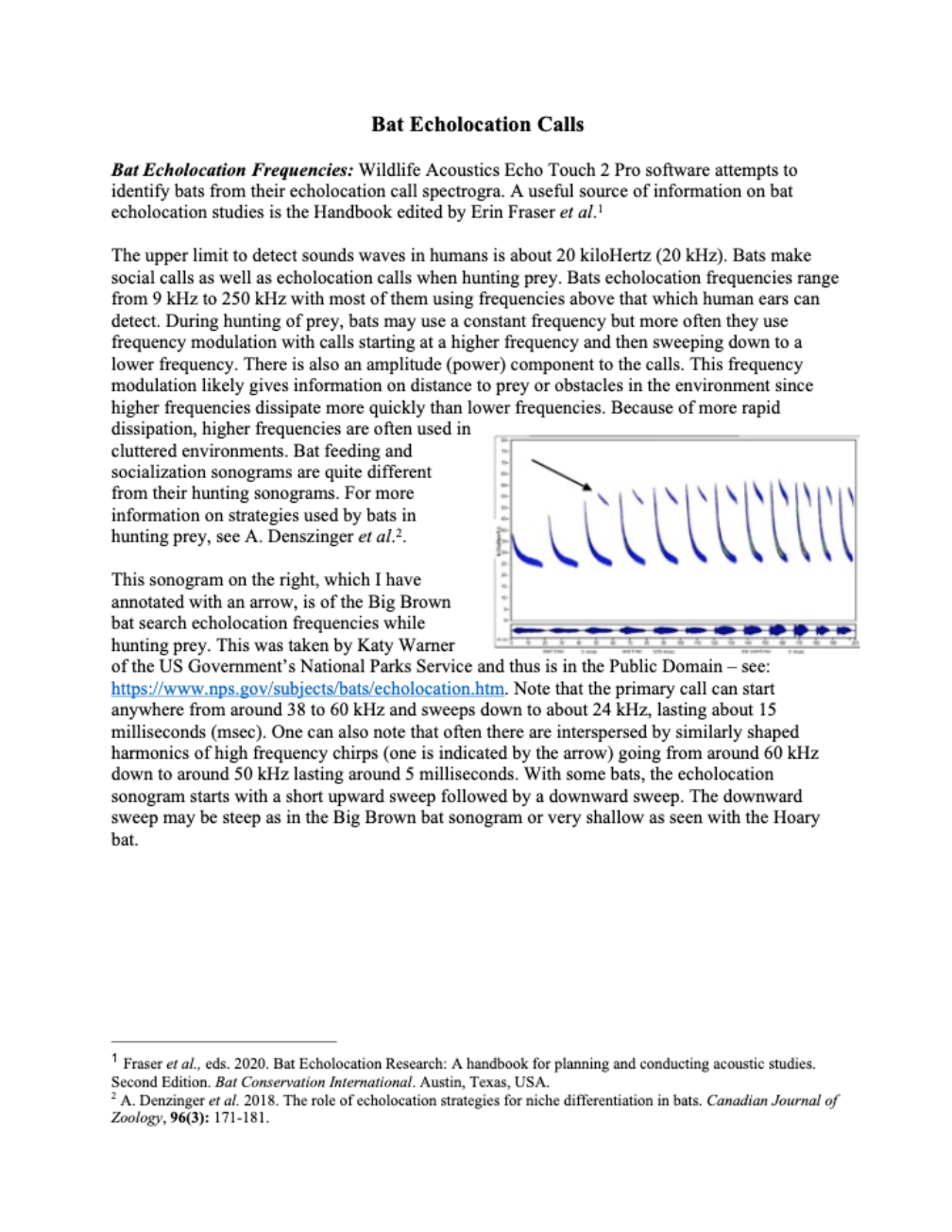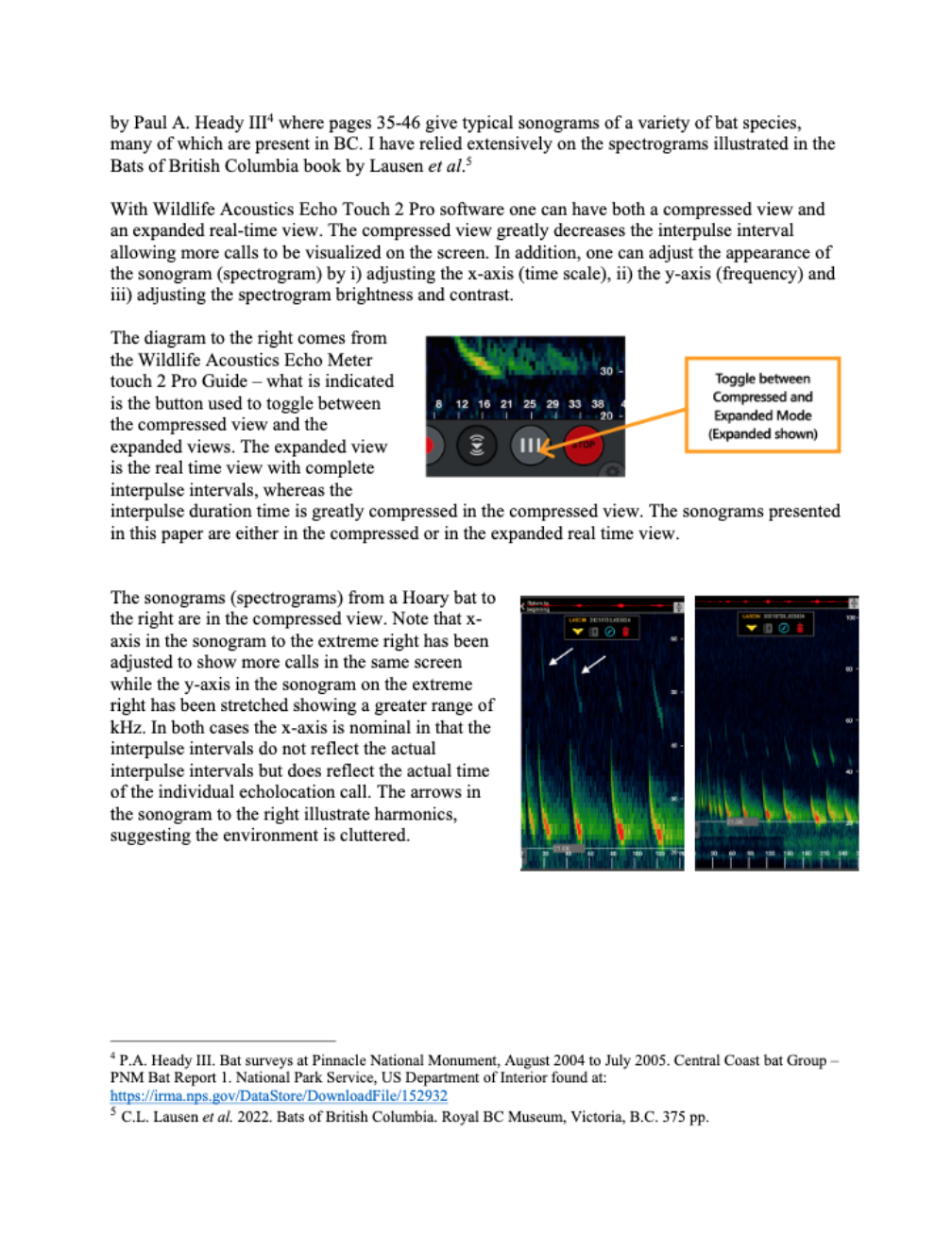Amazing Voices of Bats
Just like many other mammal species bats are social creatures who communicate with each other although with sounds we cannot hear. They identify their prey and obstacles during their --seemingly erratic-- flights by emitting high-pitched ultrasounds above 20,000 Hz beyond our hearing range. The bats recognize their prey and obstacles by the echo waves of the sounds they emit, a miraculous way to navigate through space and find their prey during the night. Each species has its language operating on frequencies best suited to its prey species and environment.
The Echo Meters used for CERCA's bat project record species-specific ultrasonic vocalizations displayed as sonograms and translated into audible sound waves. We are now in our second year of the bat project with three additional recorders added to the two of last year, enabling us to substantially expand the scope of the study. As reported earlier on our website we have formed five groups of two persons each, with each group sharing one Echo Meter. Recordings are taken 6 nights per month from June to November at the 10 strategic locations of the Cowichan Valley.
Ideally, bat activities should be recorded from dusk to dawn to cover the full range of bat activity, confined to night hours. However, unfortunately not all cell phones used by our group members have a battery life lasting all night. We are very lucky to have one of our bat group members, Dr. Bernhard Juurlink, who has recorded bats throughout the night at his location and analyzed the data by the hour. In the following article, he provides some of his data and describes the bias involved in correct species identification based on the sound recordings.
I take this opportunity to sincerely thank Bernhard for taking part in this project and for sharing his research results.
Dr. Goetz Schuerholz, CERCA Chair







